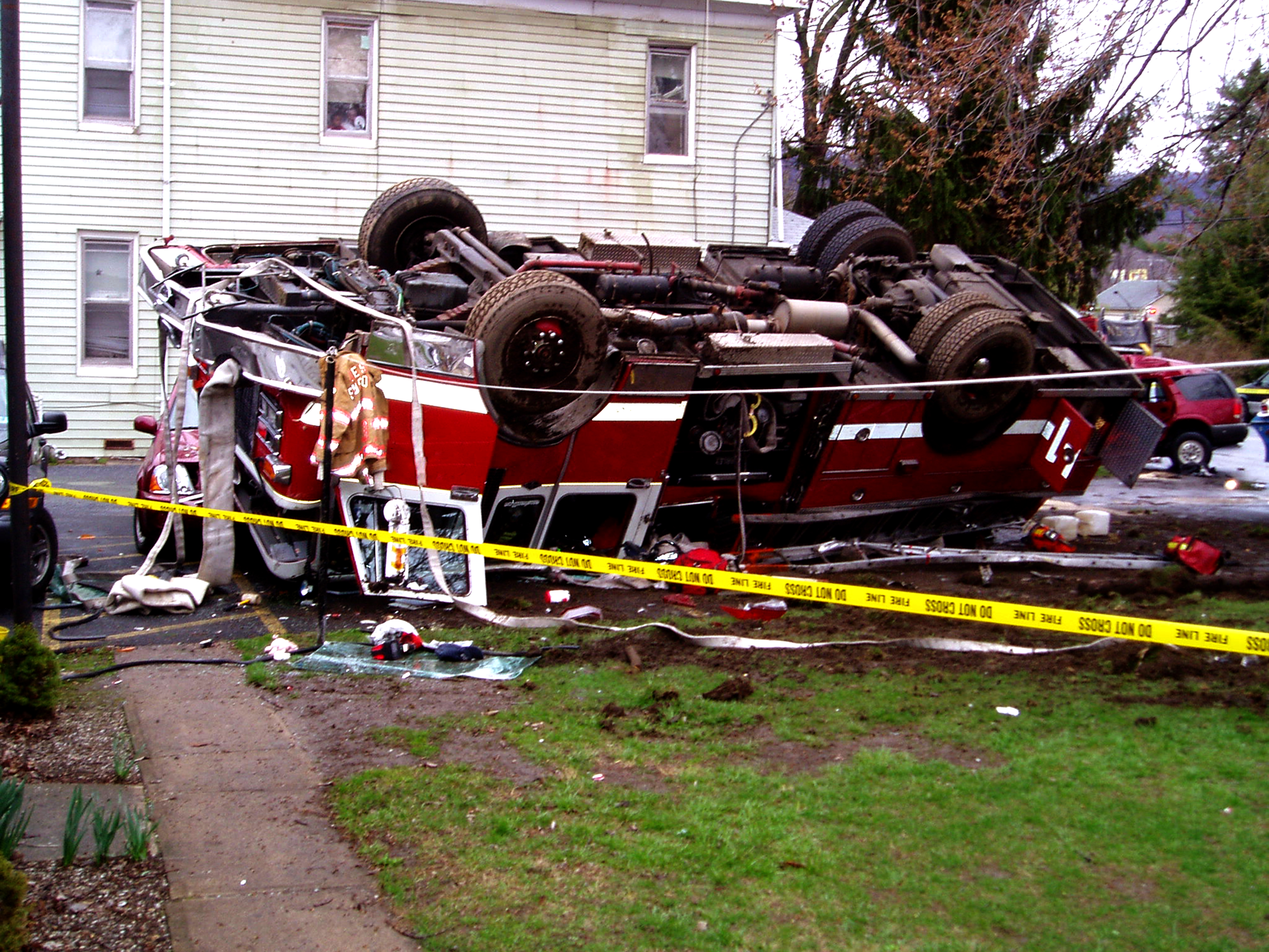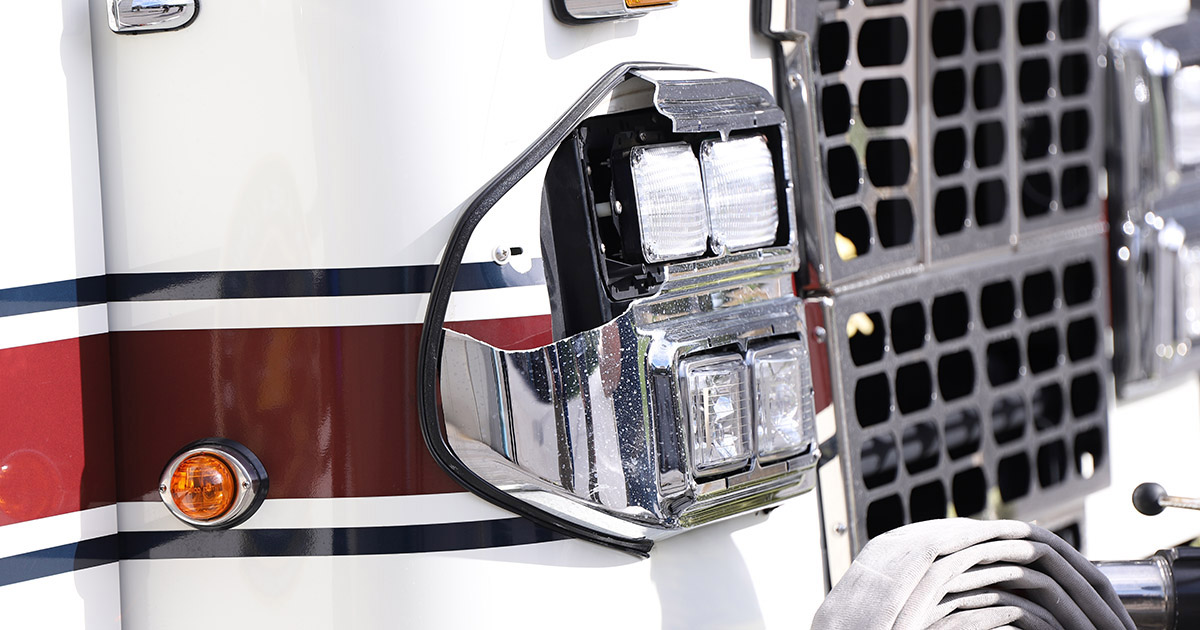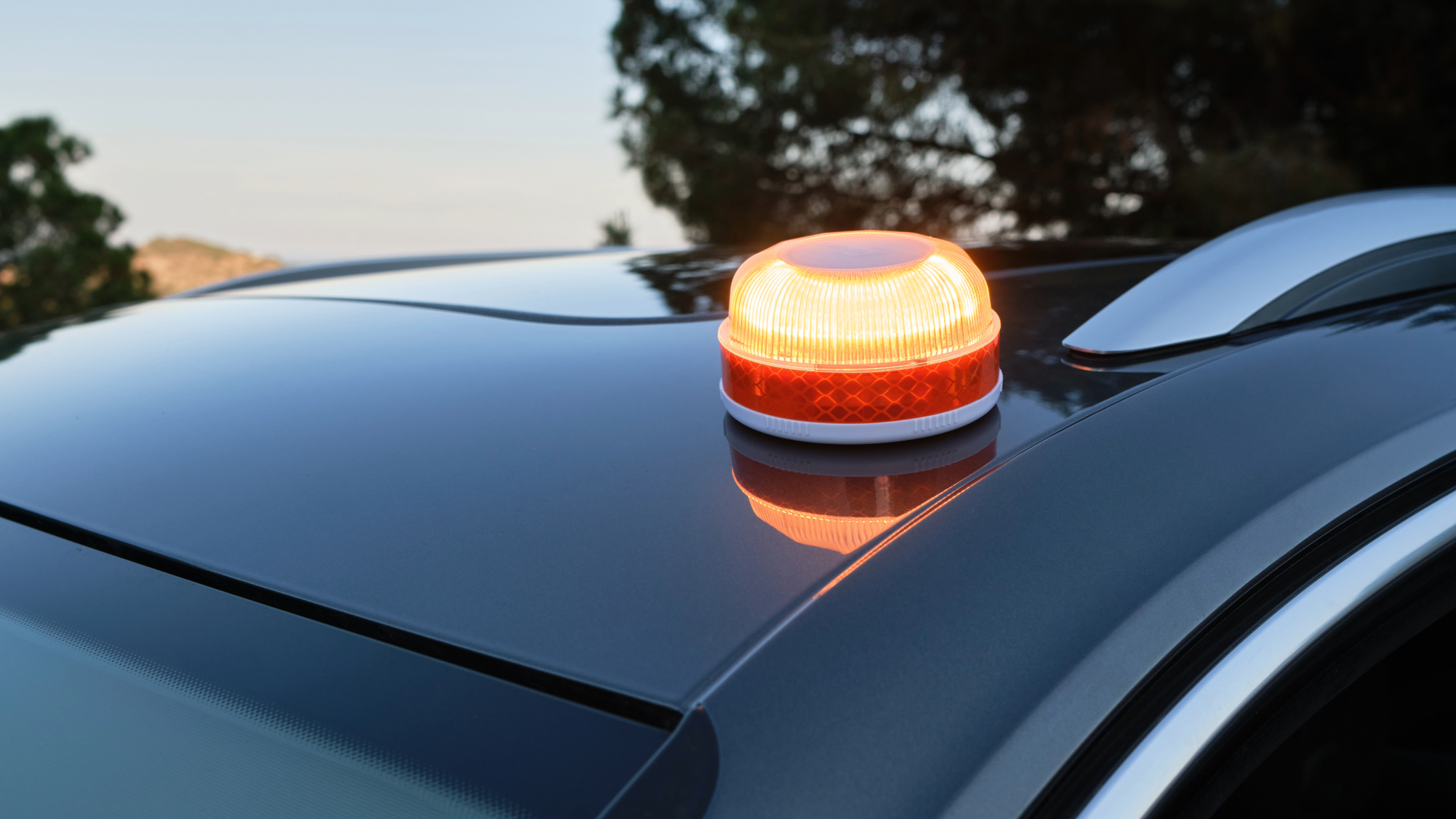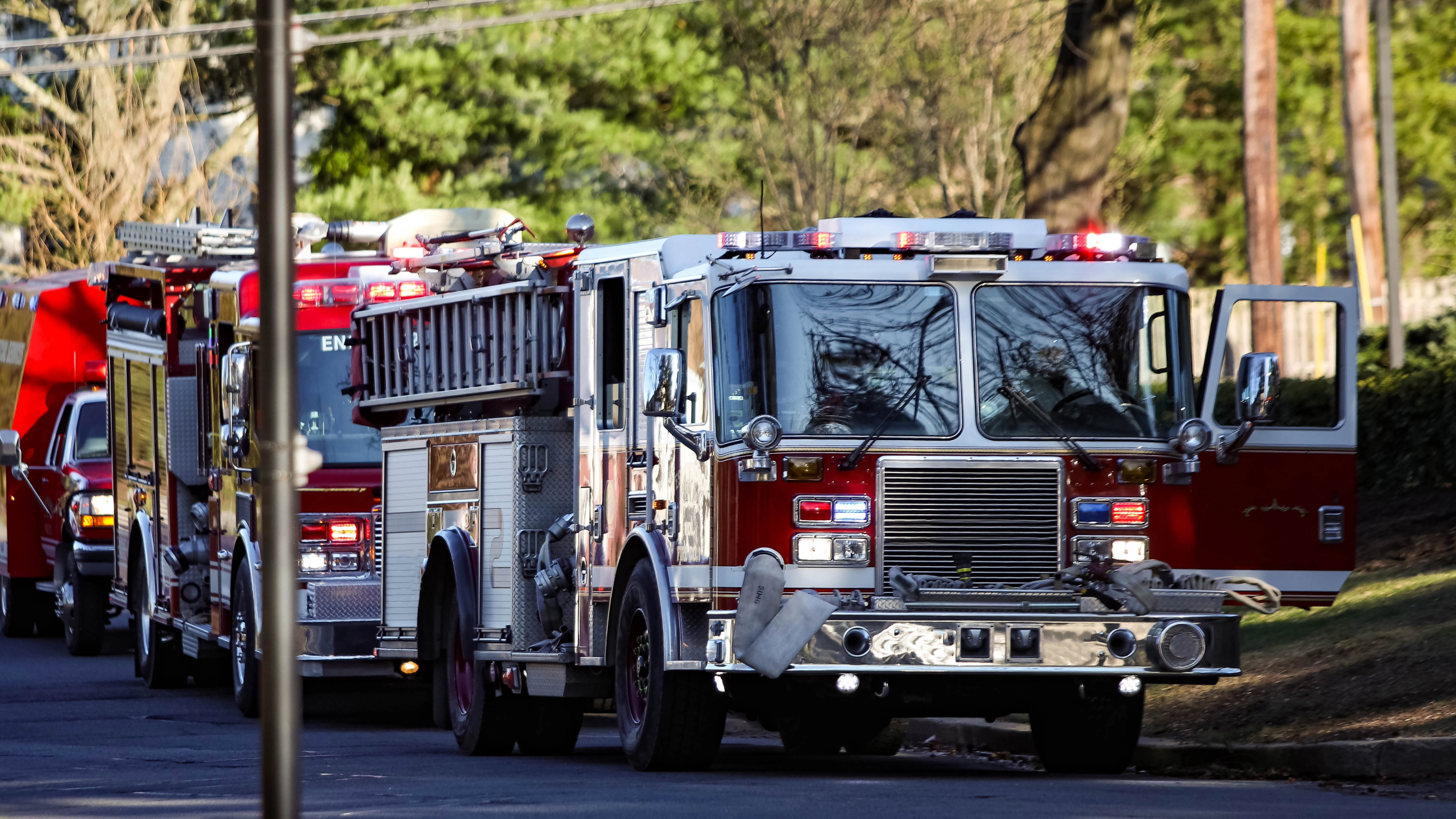What can be done to keep the rubber on the road?
Driving an emergency vehicle is a major responsibility. The lives of the responders in the vehicle, as well as the driving public are in your hands.
- In 2017, the NFPA estimated there were 15,430 collisions involved fire department emergency vehicles responding to or returning from incidents. These collisions resulted in 1,005 injuries, or 2% of all firefighter injuries.
- A study of transportation-related injury rates for EMS providers are five times higher than they are for the average worker.
- The National Highway Safety Administration reports that over 60 members of the public are killed each year in collisions with emergency vehicles.
Besides the lives that are at risk, drivers are responsible for one of the biggest physical assets the department owns—the vehicle and all the equipment on board. Emergency vehicle rollovers continue to be an all-too-frequent cause of vehicle damage, serious injuries and fatalities.
Let’s look at steps that you can take to help reduce the risk of vehicle rollovers
All emergency vehicles are subject to rollovers, but water tankers/tenders, pumper tankers, ambulances and other high center-of-gravity vehicles are most susceptible. Here’s why:
Physics plays a big part in most vehicle rollovers including the vehicle dynamics and road conditions. Most roads are crowned, with a higher centerline to allow drainage – and in some rural areas the crowns can be quite exaggerated. Driving on this slope moves the center-of-gravity to the passenger side and it will move even further to the passenger side when you add in the centrifugal force of water moving to that side when rounding a turn to the left.
In these instances, physics will try to push the vehicle off the road while the operator is steering to move the vehicle in the opposite direction. “Physics” could push the vehicle off the roadway, and potentially onto a dropped shoulder, further moving the center of gravity to the passenger side abruptly. The operator, in an attempt to correct the path of the vehicle could pull to the left — causing more weight to shift to the right. At any point of this scenario, the vehicle could roll. This is not the only scenario where physics comes into play. It comes into play anytime the forces acting on the vehicle change including during turns, stopping, accelerating and leaving the roadway.
So, how do we help prevent rollovers?
We need to reduce the negative forces that are acting on the vehicle to keep the center-of-gravity as close to the “level at rest point” as possible. The scientific explanation: the centrifugal force that acts on the load is proportional to the acceleration of the load (force = mass x acceleration). Essentially, the lower the speed, the less acceleration of the load.
But, simply put, the easiest way to prevent rollovers is to SLOW DOWN.
Your role in vehicle rollover prevention as a chief, officer or operator:
The Chief:
In this article, we are using the term "chief" to represent the organization, since in most departments, the chief is responsible for emergency response.
The chief must take the lead to ensure that vehicles are operated safely and at the very minimum— all motor vehicle laws in your state should be understood and followed. Operators must know the legal rights and obligations they have as the driver of an emergency vehicle and they should receive initial training (classroom and hands-on,) demonstrating knowledge of the guidelines and proficiency handling the vehicle.
The chief should also determine the qualifications, certification, licensing, training and re-qualification needed to operate vehicles — and enforce guidelines that outline the responsibilities for drivers, officers and crews.
Consideration should be given to:
- Emergency Medical Dispatch (EMD) and Emergency Fire Dispatch (EFD) dispatching and response modes
- Non-emergency response for all but first due apparatus until a true emergency is confirmed
- Running non-emergency with vehicles susceptible to rollovers (water tenders, etc.)
For vehicles that are susceptible to rollovers, the chief should assure that training specific to rollover prevention is also provided. VFIS has a Manage Your Risk Bulletin on Vehicle Rollovers - Lessons Learned and a training program covering vehicle rollovers that provide guidance in this area, as well as annual refresher training that is recommended for operators demonstrating proficiency.
The Officer:
The officer is the person in the right seat during the response. They’re responsible for helping assure that the vehicle is operated in accordance with the department’s guidelines and state laws. They also assist the chief to help ensure the safe arrival of the vehicle at the destination.
The officer should handle the nondriving related tasks (like radio and navigation) so the operator can concentrate on driving with minimal distraction. The operator and officer should know where they are going and the most efficient, safest route to arrive at that destination with the least risk — taking into consideration weather, time of day and special circumstances. The officer should never hesitate to have the driver reduce speed whenever the road, weather and/or call conditions dictate this.
The Operator:
The operator has the wheel in his or her hands and has control of the accelerator and brake, so it should go
without saying that they are the first and best line of defense against a rollover. “Too fast for conditions” is cited as a cause or contributing factor in many emergency vehicle collisions —making it essential that drivers not give up control for the sake of more speed.
The operator should maintain good driving habits, including:
- Wearing a seat belt to help make that the they maintain contact with the wheel — even the best operator can’t do anything if they can’t reach the wheel
- Keeping the vehicle under control at all times (start, stay and end under control)
- Using both hands on the steering wheel
- Avoiding the use of cell phones, even if a hands free device is available
- Avoiding non-essential personal communications between crew members during emergency response
- Maintaining hands in the “3 and 9” position
Want more tips? VFIS has developed a Manage Your Risk Bulletin on Sterile Cabs/Distracted Driving that provides additional information and suggestions.
In emergency services, we’re fond of saying that “seconds save lives”. Some take that to mean we should drive as fast as we can to save seconds. In reality, exceeding the speed limit in a short response area will not significantly reduce the response time, but could have a negative impact on the handling characteristics of the vehicle (stopping distance, centrifugal force during turns, etc.) — greatly increasing the risk of a collision. But in fact, pre-response preparation (being ready to leave when the call comes in) will likely save more time than speeding on the roadway without increasing the risk to your crew and the members of the public.
We continue to see responders getting hurt and worse as a result of avoidable vehicle rollovers – and we’re concerned for the health and safety of all responders. We can help prevent these types of incidents by taking steps at every level to establish a strong organization safety culture. Working together, we can help make sure more of our brothers and sisters make it home.

Scott Harkins, Risk Control
Scott was a fire chief and EMT who has always been obsessed with peanut butter and sweets (especially Reese’s). He is a mystery novel enthusiast who enjoys playing golf and traveling, although he is good at traveling and not so good at golf.
DISCLAIMER
The information contained in this blog post is intended for educational purposes only and is not intended to replace expert advice in connection with the topics presented. Glatfelter specifically disclaims any liability for any act or omission by any person or entity in connection with the preparation, use or implementation of plans, principles, concepts or information contained in this publication.
Glatfelter does not make any representation or warranty, expressed or implied, with respect to the results obtained by the use, adherence or implementation of the material contained in this publication. The implementation of the plans, principles, concepts or materials contained in this publication is not a guarantee that you will achieve a certain desired result. It is strongly recommended that you consult with a professional advisor, architect or other expert prior to the implementation of plans, principles, concepts or materials contained in this publication.
This blog post may contain the content of third parties and links to third party websites. Third party content and websites are owned and operated by an independent party over which Glatfelter has no control. Glatfelter makes no representation, warranty, or guarantee as to the accuracy, completeness, timeliness or reliability of any third party content. References to third party services, processes, products, or other information does not constitute or imply any endorsement, sponsorship or recommendation by Glatfelter, unless expressly stated otherwise.
Related posts
We asked 10 members of our VFIS Team to name one auto-related risk that they believe is underdiscussed in fire and EMS agencies. Here’s what they said.
Most volunteer fire departments rely heavily on POVs, but there are inherent risks you should know.
Establish a Emergency Vehicle Operations Program that includes driver/operator requirements to help ensure your vehicles are in the right hands.









Submit a Comment